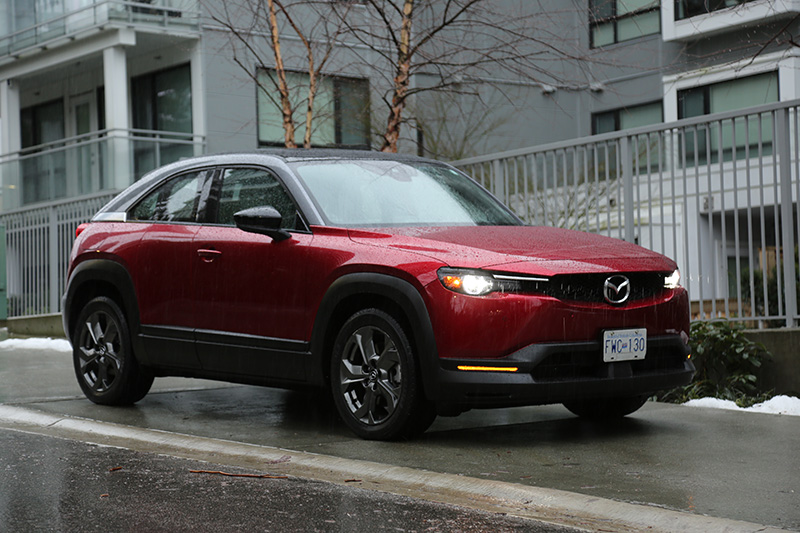
When you are introducing your first electrified vehicle and you are one of the last in the industry to do so, you had better make it one that will get noticed in the market, one that is visibly different. Such is what Mazda has done with its new MX-30.
Aimed, as it is, squarely at the urban commuter market, the MX-30 brings an uncommon approach to the EV segment, with features and capabilities that distinguish it from the other compact EVs on the market.
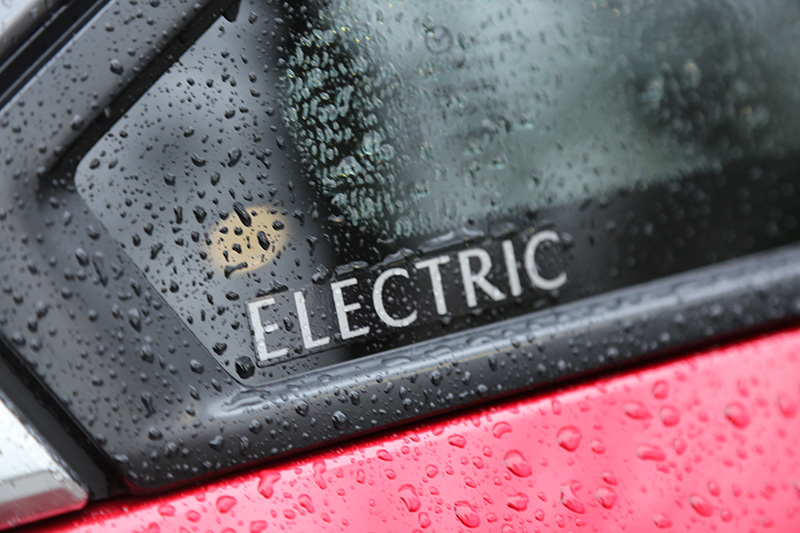
Of course, Mazda’s Kodo design philosophy is front and centre, and the MX-30 is structurally based on the existing CX-30 crossover. One departure from that model are the rear-hinged rear doors with no centre post between them and the front doors. As in all previous such designs, access to the rear seat requires different body positioning, and those of a “plus” size may just find that a bit daunting. Once your adult butt is parked in the rear seat, you had better hope that the front seat ahead of you is not all the way back, because leg room is at a premium. It is probably more of a kids’ area back there.
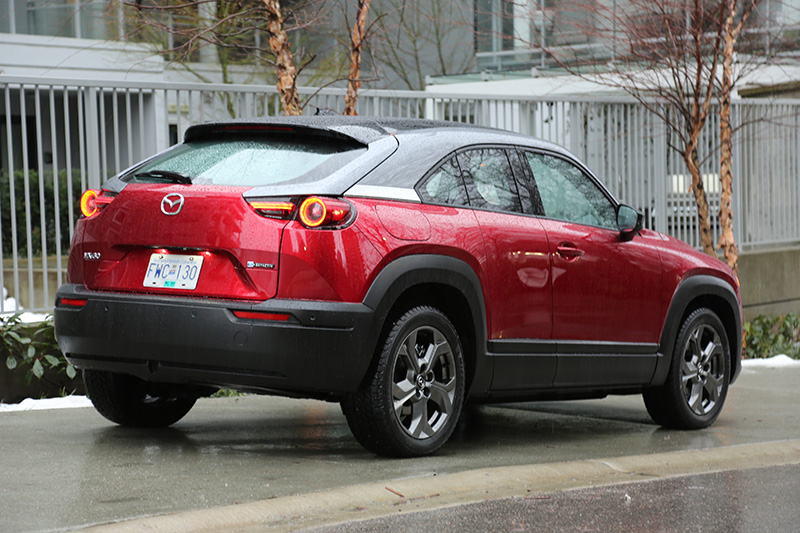
For the front seat people, the MX-30’s design is a conservative, even old-style one, with straight lines everywhere especially on the door panels, a traditional instrument panel with a smallish 8.8-inch screen high up on the dashboard, and even a real shifter with PRNDL choices (and no modes or manual shift capability). But there is something different in the materials used. For instance, some of the trim bits on the console are made of cork, a commodity that Mazda was originally founded to produce. The seats are upholstered in various gorgeous shades of light-grey partly-recycled material, and there is other trim made from recycled plastic bottles. It’s all very sustainable looking. These materials, and the doors, are very reminiscent of a certain small German EV that isn’t made anymore, as is the absence of an AM band on the radio. C’mon Mazda, some people still like news, traffic reports and talk radio.
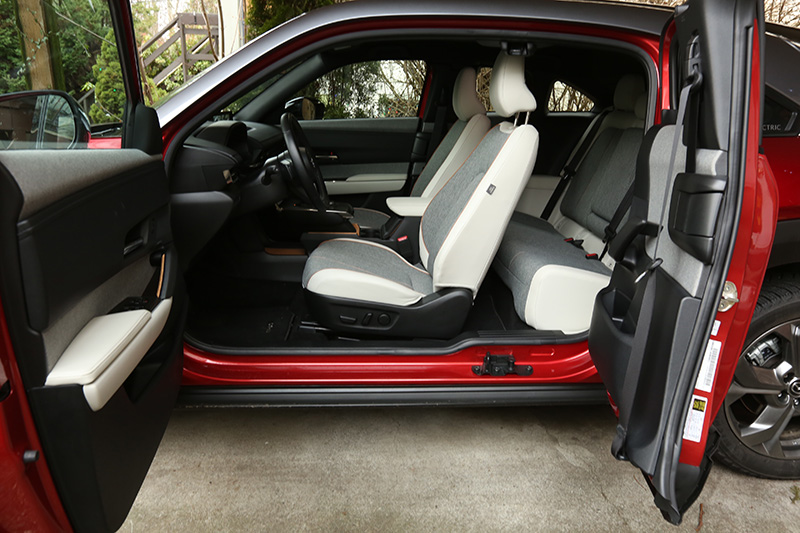
Behind the rear seats is a smallish cargo area, but the seats fold down flat making for a useful space, and for the young couple who Mazda would like to see in an MX-30, that is probably going to be of more use than a seat, anyway. Up front, where most other EVs would have a “frunk” for more storage above the motor assembly, the MX-30 has, well, nothing but motor and its ancillary systems. It’s unusual to be able to see all this, and it only takes up about one-half of the space under the hood, making it obvious that there will be an engine in there soon, a rotary one according to Mazda, to make the MX-30 a plug-in hybrid.
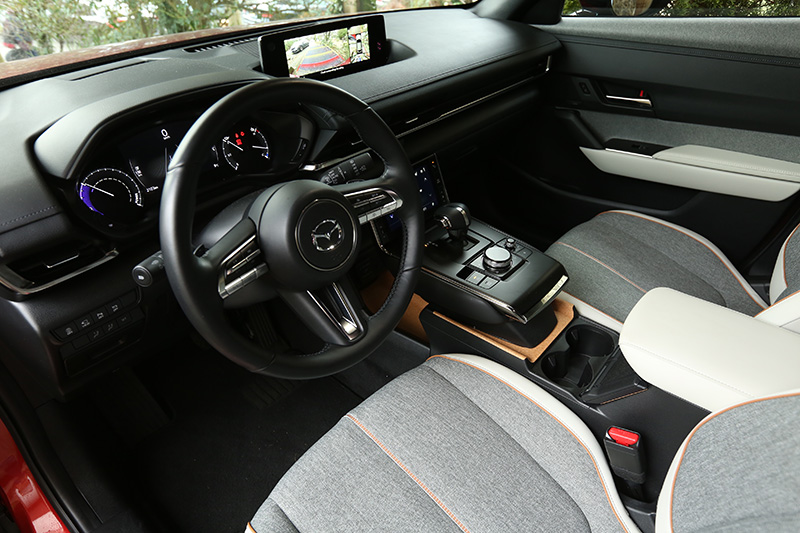
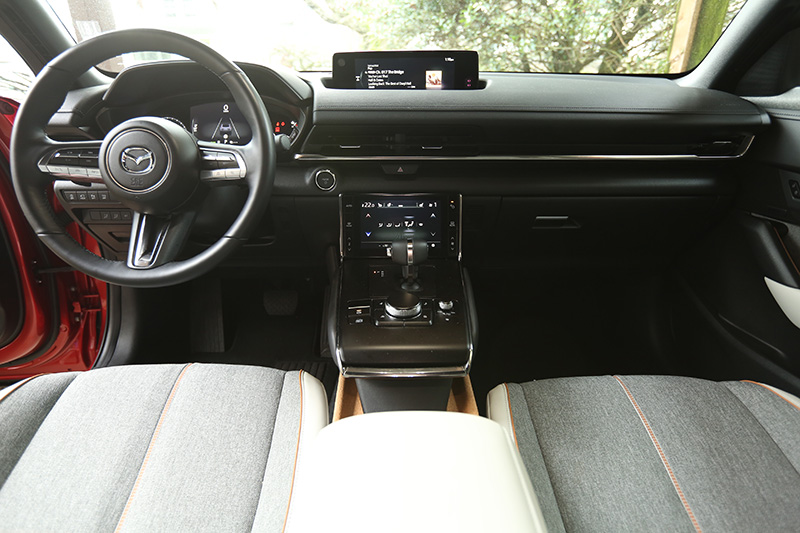
To drive the MX-30 is to know your are in a Mazda. Indeed, the only other “MX” designated model is the iconic MX-5 (Miata), so the sporty MX label is not used lightly by Mazda. The chassis is well-buttoned down with firm suspension and a low centre of gravity, the steering is firm and direct, and the brakes inspire confidence. Just one thing – it’s not especially quick by the standards of other similar single-motor front-drive EVs, because it weighs a hefty 1,658 kg, and has but 143 hp. Of course, all its torque (200 lb-ft) is instant, so off-the-line feels good, but zero-to-100 km/h is in the 9-second range.
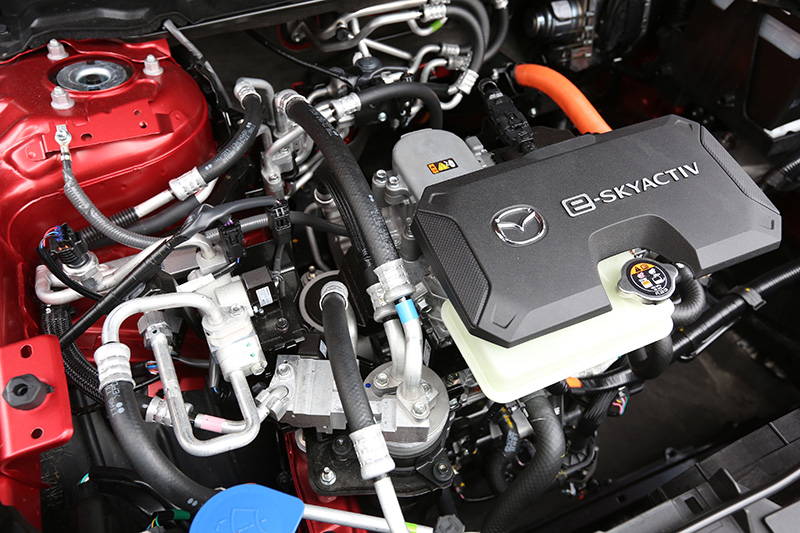
And that leaves us to discuss the number one factor that EV owners are conscious of – range on a full charge. Officially, the MX-30’s is 161 km. That is about half or less of the range of similar sized and priced cars these days. This will be the biggest discussion – other than the doors – at the dealers. Mazda is positioning the MX-30 as a sophisticated high-tech commuter car, for the majority of city-dwellers who don’t drive more than 40 km a day. Okay, that is fine, but some of those folks will want to head out on a weekend trip somewhere, and then they will have to deal with planning stops for charging twice as often. There is no way around that.
One can understand the planning involved in the design of an EV, where the cost of batteries, and their physical size for every unit of power output, are major factors in building a fairly small crossover to sell for the intended price, which starts at $42,150 for the base GS, and $47,150 for the deluxe GT we drove.
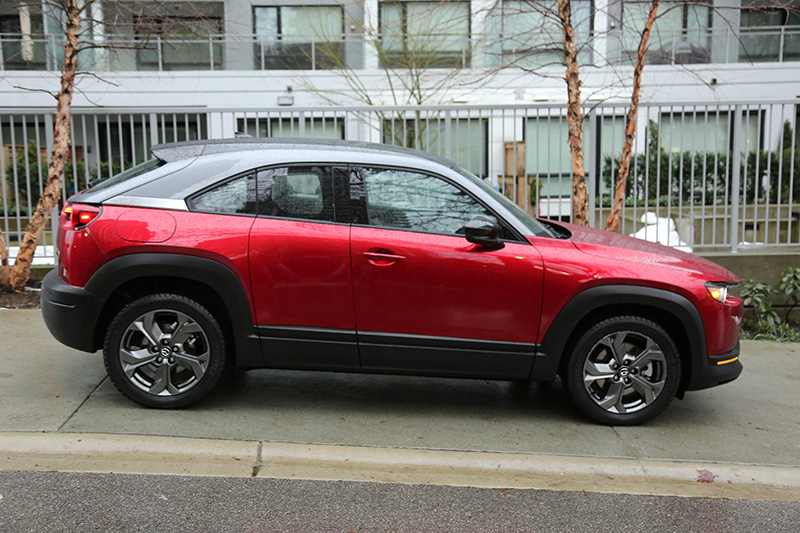
So, Mazda has done what it needed to do to build the vehicle for the target customer, and has done a fine job of it. For the urban commuter who likes style, technology and a fun-to-drive personality, the MX-30 is a hit. But all those traits, plus no range anxiety and the likelihood of still being able to drive those 40 km on electricity alone, will come soon in the MX-30 plug-in hybrid. I think I would probably wait to try that version before making a decision.




